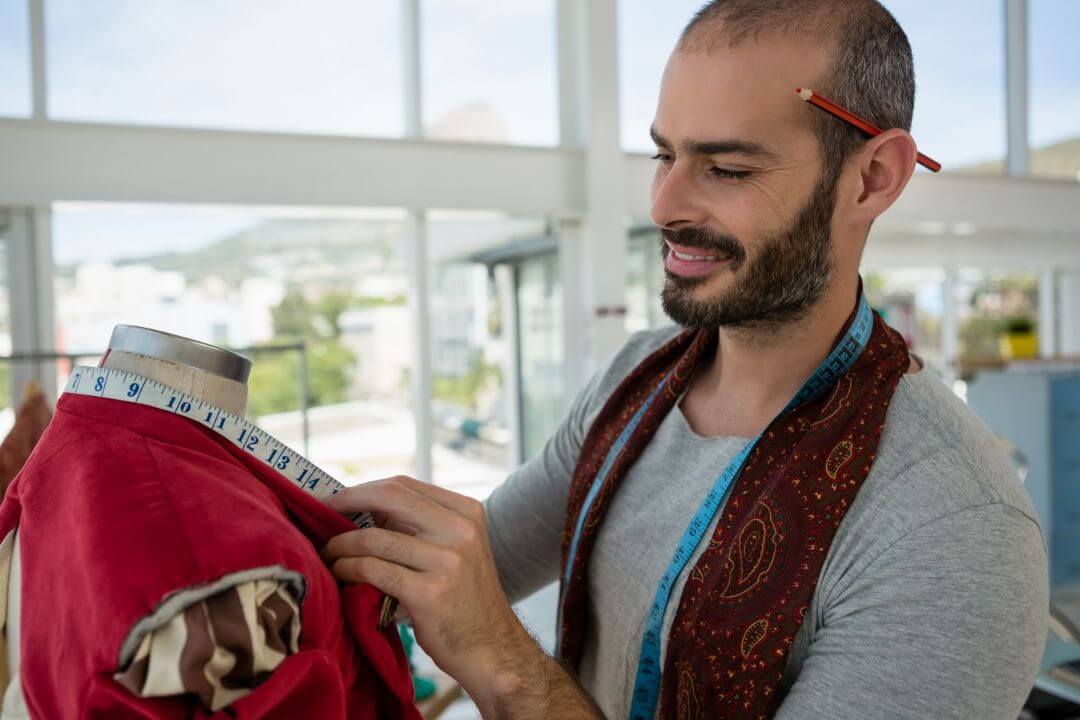
Discover the best foolproof method on how to measure a jacket. Saves Your Time & Money, Measure your jacket like a pro
Imagine purchasing the trendiest jacket available, only to find that it's void of proper fitment on delivery day. Or you are given a lovely vintage leather jacket by your grandpa, and you want to propose some alterations but you’re unsure how to instruct the tailor with accurate measurements. Current problems, aren't they?In this blog post, we delve deep into why knowing how to measure a jacket accurately paves the path to a perfect fit. We will also confront multiple challenges commonly faced during the measuring process before we determine the solution.

Knowing the accurate measurements of a jacket in different dimensions like length, sleeves, waist, and chest circumferences can save you disappointment and dollar bills. Imagine splurging on that designer chic jacket only to find it eccentric due to unfit measurements or having to deal with a layer that's too tight or too loose when walking straight into a norm-core session. It also becomes immeasurably helpful when needing to propose alterations or adjustments to an already-owned jacket.
Understanding how each part of your jacket measures up with your body proportions facilitates an excellent understanding of the fit of other clothes. It's not only about comfort; it's about style and individual expression too.

Did you just grab that old seamstress’ measuring tape from Grandma's sewing basket, clueless about where or how to commence the measuring spree? That sounds fairly common.
The absence of clear visualization and not having access to relevant instructions are among the aptly understated obstacles in achieving accurate jacket measurements. Getting tweaked measurements due to improper usage of tools, or baffling terms that like sleeve length, shoulder slope, can be stumbling blocks too.

Perfect jacket measurement isn’t inherently complicated skill—it just requires a host of specialized tools and careful walkthrough over the measurement process. Here are the fundamental tools and peripherals crucial for meticulous jacket measurement:
The measuring tape – an understandably classic and crucial tool – is necessary to acquire precise measurements. Opt for centimeters and inches-based versions for greater compatibility.
One of the underrated 'tools' is patience. Accurate measurement can't be rushed. You need to ensure that each step is done correctly for perfect results.
Often overlooked, markers and paper can aid you track each measurement you take. It's easier to note down measurements in real-time in order to avoid confusion later.
While certain measurements can be adequately undertaken solo, having a friend to assist can make the jacket measuring process more straightforward and effective.
Below, you’ll find a step-by-step guide on accurately measuring a jacket for that tailored fit post-alterations or getting the right jacket online.
To obtain accurate jacket measurements, make sure your jacket is laid flat on a hard surface - back side up, zipped or buttoned up. Double-check, arms aren't twisted and, collars, lapels, fold-lines, or hems are in their natural state. Remember any strokes, budges or waves can lead to incorrect results.
Start from where the collar edge meets the jacket's body (typically where your own neckline lies) and measure straight down the jacket's back to the bottom. Length measures give convey how long jacket the will be on you. It’s especially important for overcoat, snow jackets, or trench coat styles.
Starting from the point where the sleeve meets the shoulder, stretching down to the end edge of the sleeve covers a full sleeve length measure. Keep in mind to track the entire outer (convex) line of the arm instead concentrating on the 'shorter cut'. Whenever in doubt, tap in that we generally tend to pivot our arms than stick straight during ideal measure checks.
For this, you'd need to measure the distance across the back of the jacket from one shoulder seam to the other. It generally mirrors the distance across our shoulders at the back. A well-fitted shoulder width conveys a put-together look and positively affects adequate free-arm movement.
This measurement is crucial for determining if the jacket will accommodate your torso and chest. Secure a measurement by gauging the distance from one point of the armpit to another, and again doubling the tape around the jacket for a unified circumference.
Every niche of a jacket from the collar, lapels, cuffs, and pockets to zipper lengths, might demand distinct consideration. They constitute an aesthetic effect on each jacket’s blue-print, bearing information on their tailored orientations.
Measuring a jacket might appear easy and unerring but often a handful of opportunities for missteps subsist. Common errors might involve:
As emphasized before, the key outcome rests upon you laying down the jacket out in a naturally flat manner. Not ensuring this may lead to incorrect readings.
If we forfeit necessary measure checks or rest contempt with a single unverifiable trial, then end results are expected to be skewed.
Repeating measurements and applying controlled second-checks is beneficial to confirm the accuracy of measures, thereby improving the platform of quality-check methodologies.
Using an improperly calibrated or warped measuring tape could lead to false measurements and hence, evaluating the position of the tape with each read-out scale is crucial. Say, your reading for a seam reaches significantly across its last digit; discard the tool thereon too.
Obtaining and implying accurate jacket measurements are not only advantageous but often prove therapeutic to many material planning and alteration workshops
The right measurements ensure that your jacket gives you an exclusive tailored fit and not just an "around ballpark" one. An appropriately fitting jacket accentuates your silhouette and helps you appear more polished and sophisticated
No more costly returns or changes due to incorrect sizing. With the right measurements at hand, you will be able to purchase, order, or alter a jacket that fits you perfectly the first time around.
Honestly, there's nothing that ruins an outfit quite like ill-fitting clothing does. You could be wearing the most exorbitantly tagged branded jacket, but if it doesn't fit right, the aesthetics fail drastically.
You can express your style and identity more substantially when wearing clothing, here is the jacket, that accurately fits rather than it being too tight or tent-like.
Lastly, but most importantly, the correct size promotes paramount comfort for ease in bodily gesture and movement.
At the end of the day, understanding how to measure a jacket fittingly ensures extended proximity with your jacket, amping up your style game up a notch. Practice, take your time and ensure you record every measurement, and you will be restocking your favored jackets precisely. It only becomes easier and, believe us; you will gradually develop an intangible relationship with your jackets while knowing what incredibly works for you and what does not. Add to the fact that you can forgo those time-consuming expeditions to tailor shops or seamless returns due to size unavailability. You can keep crafting your own polish and style while meticulously jotting out points of improvement. Armed with insights from this blog on how to measure a jacket, it is assured that you march forward possessing knowledge about the intricacies of jacket measurements and how to perform them accurately.
Q: What's the biggest mistake to avoid when measuring a jacket?
The biggest mistake to avoid is not laying the jacket out flat before you begin measuring. This could lead to misreading the length, width, and dimension of the articles. Make sure the jacket is on a hard, flat base with arms correctly positioned, not twisted, and collar, and lapels, in the natural state.
Q: I’m a beginner at this, should I measure the jacket by myself or do I need someone's help?
A: While most measurements can be taken alone, intricate measurements especially for sleeves or length might better suit a buddy assisting them. The duo's force particularly brings value in performing concurrent checks regarding laying out the jacket, holding one side of the jacket in correctly while measuring, writing the measurements down in a timely and efficient way, and tracking repetitions for any incoming irregular reads.
Q: What should I do if I can't find a proper measuring tool?
A: In the absence of a suitable measuring tool like tape, you might want to use improvised tools- a string or a strip of paper can serve a good purpose. However, these improvised measurement efforts require concurrent scale comparisons with measured values on regular tools. If you consider using a standard unit-sized article (like A4 paper is 11", or Dollar notes for that matter stand at more than 6") to pick articles size by combining these pieces, just take that it might emerge more complicated than good aid. Picking up a measuring tape soon enough should solve your problem.